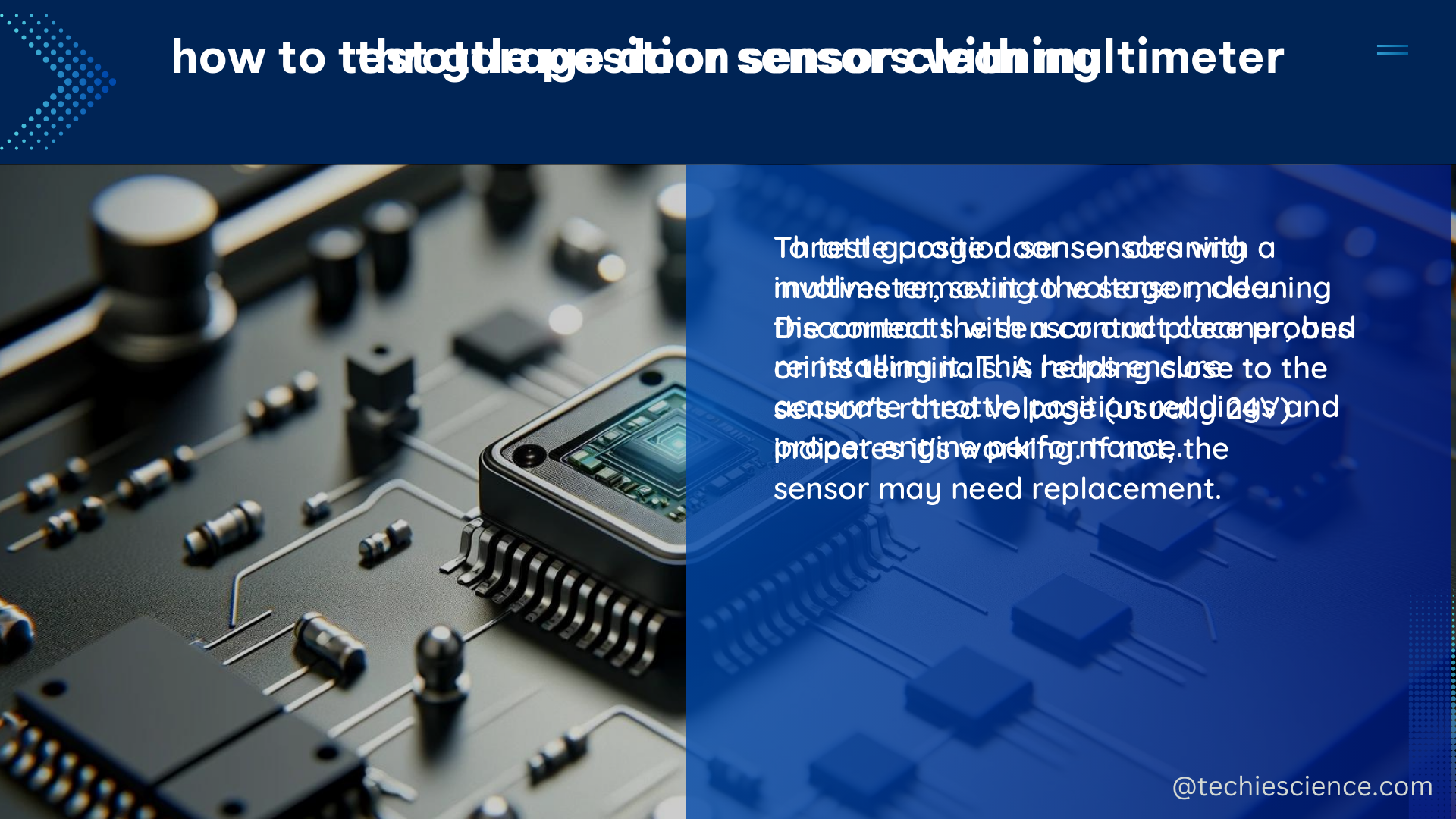The Throttle Position Sensor (TPS) is a critical component in modern vehicles, responsible for providing the Engine Control Unit (ECU) with crucial information about the position of the throttle valve. Over time, this sensor can accumulate dirt and contaminants, leading to inaccurate readings and potential drivability issues. Proper cleaning and maintenance of the TPS is essential for ensuring optimal engine performance.
Understanding the Throttle Position Sensor
The TPS is a potentiometer that measures the position of the throttle valve, converting this information into an electrical signal that the ECU can interpret. This data is used by the ECU to manage various engine functions, such as fuel injection, ignition timing, and idle speed control. A properly functioning TPS ensures that the engine receives the right amount of air and fuel, resulting in smooth acceleration, efficient fuel consumption, and reduced emissions.
Symptoms of a Dirty Throttle Position Sensor

When the TPS becomes dirty or contaminated, it can exhibit several symptoms that indicate the need for cleaning or replacement:
- Rough Idling: A dirty TPS can cause the engine to idle roughly or unevenly, as the ECU is unable to accurately control the air-fuel mixture.
- Hesitation or Stumbling: Inaccurate TPS readings can lead to delayed or inconsistent throttle response, causing the engine to hesitate or stumble during acceleration.
- Poor Fuel Economy: Incorrect TPS data can result in the ECU providing the wrong fuel-air mixture, leading to decreased fuel efficiency.
- Check Engine Light: The ECU may detect issues with the TPS and trigger a check engine light, alerting the driver to the problem.
Preparing for Throttle Position Sensor Cleaning
Before attempting to clean the TPS, it’s essential to gather the necessary tools and materials:
- Throttle Body Cleaner: Use a cleaner specifically designed for cleaning throttle bodies and TPS sensors, as these products are formulated to be safe for the sensor’s delicate components.
- Lint-free Rags: Ensure that you have clean, lint-free rags on hand to wipe down the sensor and surrounding areas.
- Torx Screwdrivers: You’ll need the appropriate Torx screwdrivers to remove the throttle body and access the TPS.
- Multimeter: A multimeter is essential for checking the TPS’s resistance values before and after cleaning.
Disassembling the Throttle Body
- Disconnect the negative battery cable to prevent any electrical issues during the cleaning process.
- Locate the throttle body, which is typically situated near the air intake system.
- Using the appropriate Torx screwdrivers, remove the throttle body from the engine.
- Carefully disconnect the TPS connector, taking note of its orientation to ensure proper reassembly.
Cleaning the Throttle Position Sensor
- Apply a generous amount of throttle body cleaner directly to the TPS, ensuring that the entire sensor is covered.
- Use a clean, lint-free rag to gently wipe away any dirt, grime, or contaminants from the sensor’s surface.
- Avoid using excessive force or scrubbing, as this can damage the delicate components of the TPS.
- Carefully inspect the sensor for any signs of wear or damage, such as cracks or discoloration.
Checking Resistance Values
- Use a multimeter to measure the TPS’s resistance values before and after cleaning.
- With the throttle closed, the resistance should be within the manufacturer’s specified range, typically around 1.5 kΩ.
- As the throttle is opened, the resistance should increase linearly, providing a smooth and consistent reading.
- If the resistance values are outside the recommended range or exhibit irregularities, the TPS may require recalibration or replacement.
Reassembling and Recalibrating the Throttle Body
- Reconnect the TPS connector, ensuring that it is properly seated and secured.
- Reinstall the throttle body, taking care to align it correctly and tighten the Torx screws to the specified torque.
- If necessary, recalibrate the TPS using a diagnostic scanner or the vehicle’s service manual instructions.
- Start the engine and check for any drivability issues or check engine lights, addressing any problems that may arise.
Maintaining the Throttle Position Sensor
To ensure the longevity and proper functioning of the TPS, it’s recommended to clean it regularly as part of your vehicle’s maintenance schedule. Depending on driving conditions and mileage, the TPS should be inspected and cleaned every 30,000 to 60,000 miles (48,000 to 96,000 km).
By following these comprehensive steps, you can effectively clean and maintain your vehicle’s Throttle Position Sensor, ensuring optimal engine performance, fuel efficiency, and drivability.
References:
- Throttle Position Sensor Cleaning and Calibration
- What Cleaner Should I Spray Into the Throttle?
- Throttle Position Sensor Calibrating or Adjustment Help
- Does Anyone Know How to Clean the Throttle Position Sensor?
- DIY: How to Calibrating Voltage Your TPS Sensor

The lambdageeks.com Core SME Team is a group of experienced subject matter experts from diverse scientific and technical fields including Physics, Chemistry, Technology,Electronics & Electrical Engineering, Automotive, Mechanical Engineering. Our team collaborates to create high-quality, well-researched articles on a wide range of science and technology topics for the lambdageeks.com website.
All Our Senior SME are having more than 7 Years of experience in the respective fields . They are either Working Industry Professionals or assocaited With different Universities. Refer Our Authors Page to get to know About our Core SMEs.